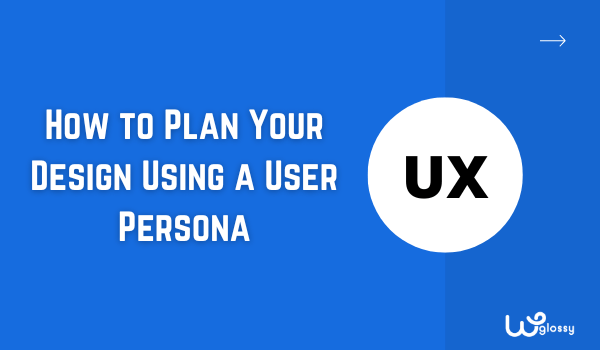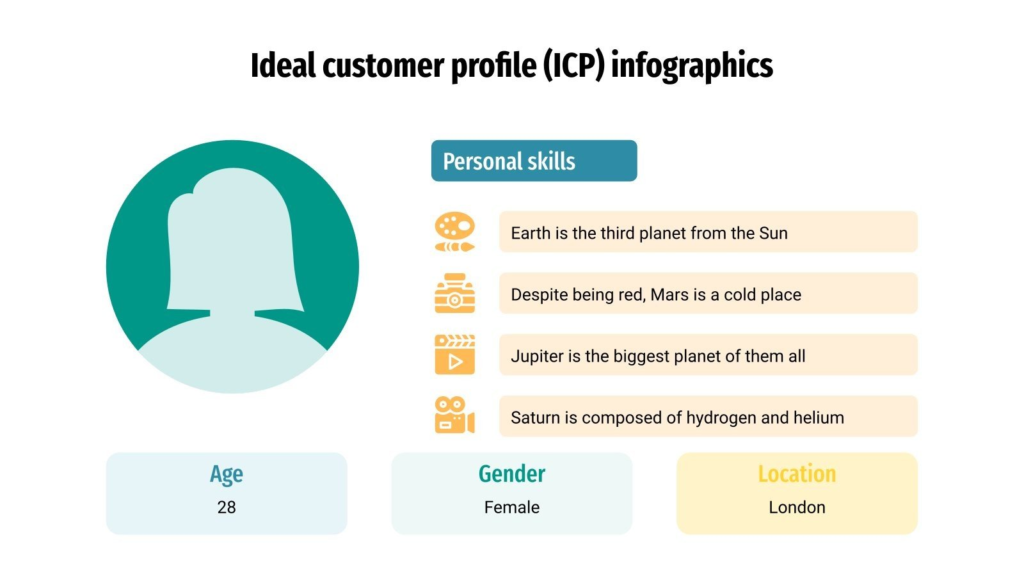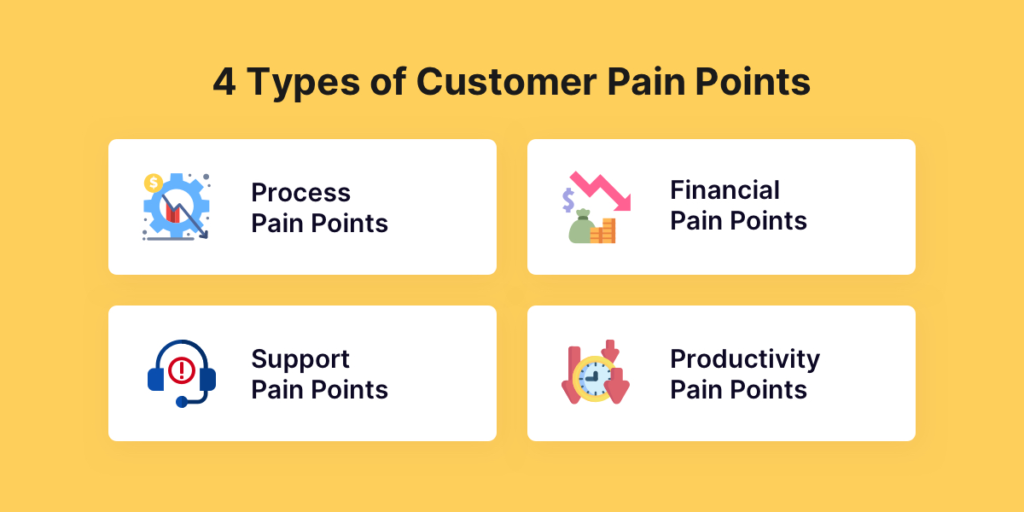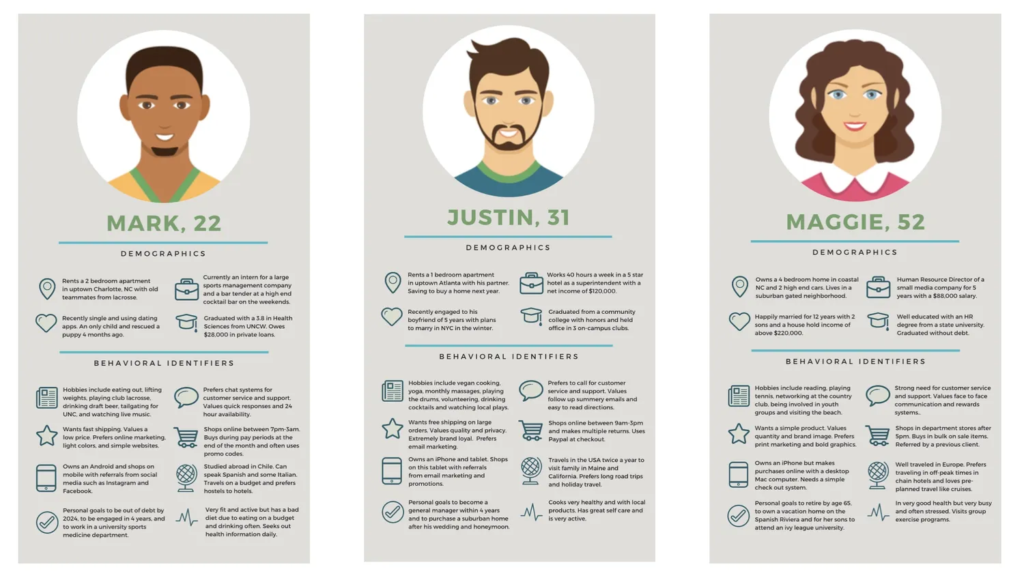
Having a large user base is an accomplishment for any business. It indicates that you have successfully created products and apps that resonate with customers.
Identifying who’s on the other side of the relationship is the key to designing products based on customer requirements. Businesses that remain ignorant of the needs of their users are clueless in understanding what affects a customer’s decision.
On the contrary, businesses that take a wild guess at their target audience might have to shut down their business before it takes off.
Why?
How can you ensure your UX design is relevant if you are unaware of who you’re designing for? That’s why UX designers and businesses rely heavily on user persona.
A user persona helps a small or large-scale business understand the requirements of its target audience. Understanding what user persona is and how it can help in planning your product’s design is essential for delivering products based on customers’ requirements.
But, let’s first start with the basics!
What is a user persona?
A user persona is a visual representation of your target audience. It’s usually a one-page document depicting a fictional person who displays your target audience’s traits, behavior, and attitudes.
Your user persona works like a benchmark for design teams to create an optimal user experience. It’s a fictional profile based on the type of people who are likely to be the primary user of your product or software.
The goal of a user persona is to help designers build a product that users are willing to use. These personas help you get inside your audience’s mind and help you gain valuable insights, and make design decisions based on the user’s requirement.
User persona prevents you from operating and designing in a vacuum. It lets you create apps, websites, and software that address your customer’s pain points and requirements. Even though they are fictional, they’re based on real people and serve as a helpful shorthand for design-related issues.
A user persona depends upon the user research and incorporates requirements, observed behavior patterns, and goals of your target users. Often, a business might use more than one user persona to reflect different segments of their target audience. This is because a user persona is compelling when it’s specific.
steps to plan your Site design With user persona
Use these steps to plan your design using a user persona:
1. Identify your ideal customers
The design team uses the user persona to determine and identify your ideal customers. Often, companies that neglect users end up creating products with the wrong target audience. Such products can solve problems faced by the team and not address the issues faced by your customer.
It’s simple to create a product for yourself rather than something that resonates with your audience. Creating a product for yourself results in product failure because there is no buyer for what you’re trying to sell.

To understand what customers want, businesses focus on building multiple user personas. Creating a user’s persona helps a designer understand their audience and plan designs based upon it.
What’s more interesting is that user persona helps understand the target audience and primarily allows a business to focus on customers’ needs and journeys. It helps them ensure that UI/UX designers mainly focus on meeting the user’s requirements and providing that they fill the gaps.
2. Determine the pain points of customers
You want to present your product or service as a potential solution to your customer’s problem. Before you give your product as a solution, you must determine their pain points.
One intuitive way to gather this information is using focus groups and integrating the data to understand what users expect from a product or brand.

You can even conduct customer research and survey to discover the problems they might face with a similar product. For instance, if your user’s pain point is that they’re spending too much money on their current product, you can design a product that offers a lower number of features at a low cost.
When you know what your customers are looking for, it becomes easy to design a product that answers their pain points and helps deliver a solution that generates revenue.
3. Modify your designs
When you know who your customers are and their pain points, it becomes easy to improve your decision-making regarding product design. If your persona reflects customers’ needs, wants, and requirements, you can design a product that resonates with users.
However, don’t be under the impression that after receiving customer feedback, you will modify the design’s prototype once. It’s a systematic process. Personas are not helpful unless you refer to them early and often.
So, when you receive a user persona, create a version of your product’s prototype. Make changes as you receive more information. Towards the end, you can cross-check the in-progress design against the available personas. By doing so, it becomes easier to validate your design solution.
After understanding how you can plan your design using a user persona, let’s explore how you can create a user persona that delivers value to UX/UI designers.
Useful Tips to create a user persona
Use the following steps to create a user persona!
1. Focus on quantitative and qualitative user
Collect every possible information about your user to capture data that delivers the desired results. You can use both quantitative and qualitative research methods. Some quantitative research methods to use can include online surveys and web analytics.
Additionally, some qualitative research methods include user interviews, usability tests, and contextual interviews. Using these research methods, you can understand how users interact with other competitors’ products.
Conducting usability tests involves conducting one-to-one sessions that involve understanding how a user interacts with your product and determining their challenges and frustrations. This helps in creating products that answer customers’ queries and requirements.
2. Organize your research
After collecting the desired information, focus on organizing your research to gather meaningful insights.
After you gather helpful insights into user behavior through your research, it’s essential to condense your data into a solid analysis. Focus on observing differences between identifying recurring behavior, themes, and characteristics.
For data obtained using quantitative research, you can visualize your findings using graphs and charts. It can give you a clear idea of opportunities and trends that you can use in your user persona.
3. Decide on the number of user persona
After understanding your target audience, the next step is identifying which user groups are essential and focusing on them throughout development. Having one or four user groups is ideal for creating product designs that matter the most to your customers.
From every group, create one user persona. Ensure a clear distinction between each group and clearly define each persona. Categorize your persona into a primary or secondary persona.

Primary persona refers to users interacting with your products and being the decision-maker. At the same time, secondary persona refers to users who require minor changes to the service or product before using your products.
4. Describe and visualize your persona
After gathering your findings, use your research to define critical details about your character, such as name, image, demographics, and psychographics.
Once you have these details, design your user persona document. This persona serves as a reference point in your design process, helps make decisions related to product design, and assists in getting you through any creative blocks you might face.
Ensure your user persona is visually appealing and encourage your design team to work based on your user’s requirements.
When creating user personas, ensure you keep them consistent in design. Though you can play around with different color palettes and layouts, the overall design should be consistent. You can also use infographics or icons to make your user persona stand out.
Key takeaways
After creating your user persona, don’t forget to use them. Use them during your internal meetings where you must decide about a product design. Making them accessible to everyone in your design team can be the key to success.
The rule here is simple! The more you use your user persona, the better acquainted you will be with your users. At first, creating a fictitious persona might seem challenging, but it can help satisfy your customer’s needs and pain points.
Ensure that your user persona creation is a team effort to yield maximum results. Please consider team members’ previous experience to understand who your target audience is and create products that resonate and meet their demands.
Just like people and technology, your user persona might change. So, it’s critical to ensure that your persona reflects the best behavior of your target audience. Refining your persona is as important as creating them because it helps design products that meet customer requirements.
